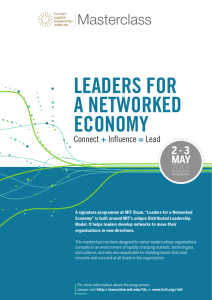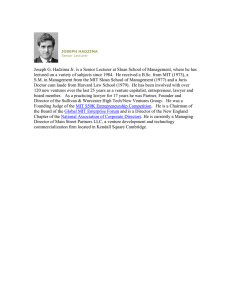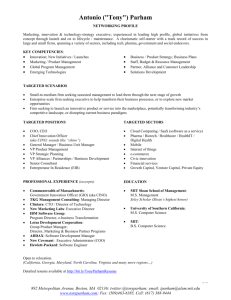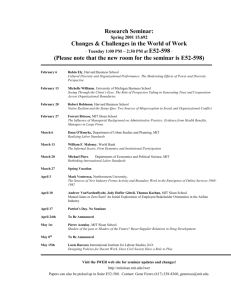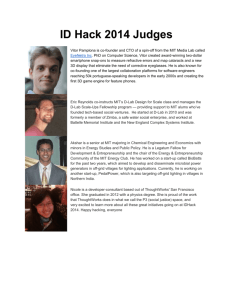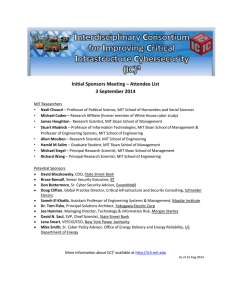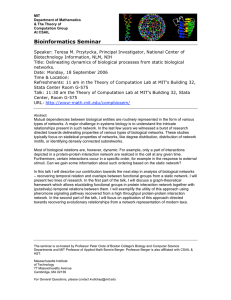At a time of change and challenges, leadership becomes an
advertisement
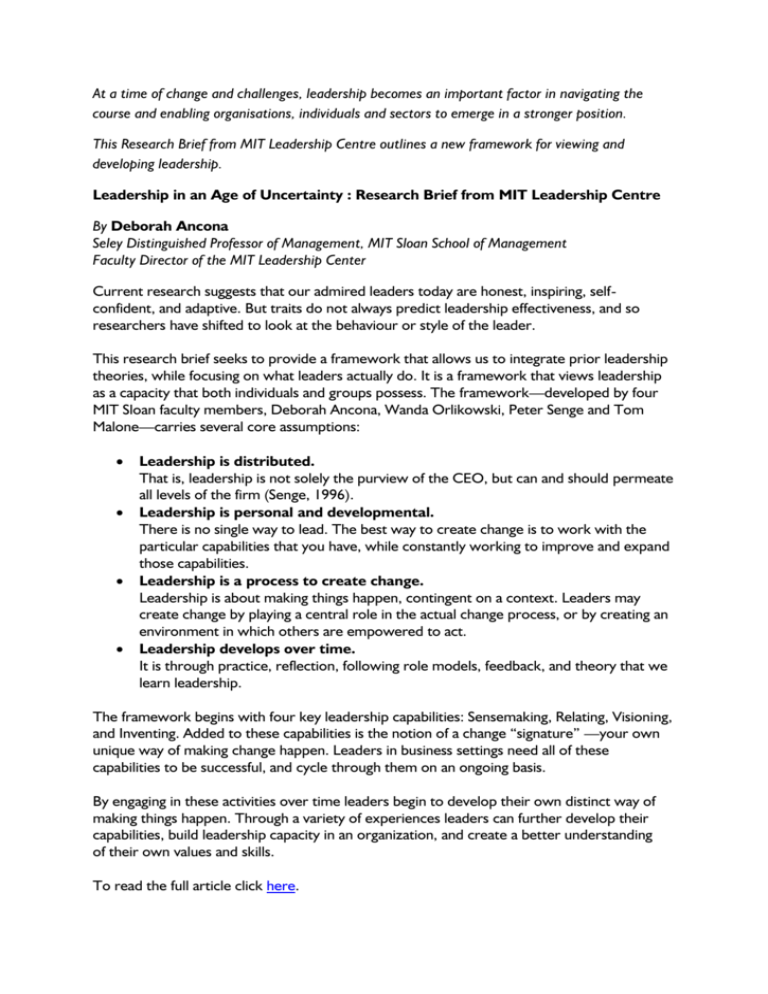
At a time of change and challenges, leadership becomes an important factor in navigating the course and enabling organisations, individuals and sectors to emerge in a stronger position. This Research Brief from MIT Leadership Centre outlines a new framework for viewing and developing leadership. Leadership in an Age of Uncertainty : Research Brief from MIT Leadership Centre By Deborah Ancona Seley Distinguished Professor of Management, MIT Sloan School of Management Faculty Director of the MIT Leadership Center Current research suggests that our admired leaders today are honest, inspiring, selfconfident, and adaptive. But traits do not always predict leadership effectiveness, and so researchers have shifted to look at the behaviour or style of the leader. This research brief seeks to provide a framework that allows us to integrate prior leadership theories, while focusing on what leaders actually do. It is a framework that views leadership as a capacity that both individuals and groups possess. The framework—developed by four MIT Sloan faculty members, Deborah Ancona, Wanda Orlikowski, Peter Senge and Tom Malone—carries several core assumptions: Leadership is distributed. That is, leadership is not solely the purview of the CEO, but can and should permeate all levels of the firm (Senge, 1996). Leadership is personal and developmental. There is no single way to lead. The best way to create change is to work with the particular capabilities that you have, while constantly working to improve and expand those capabilities. Leadership is a process to create change. Leadership is about making things happen, contingent on a context. Leaders may create change by playing a central role in the actual change process, or by creating an environment in which others are empowered to act. Leadership develops over time. It is through practice, reflection, following role models, feedback, and theory that we learn leadership. The framework begins with four key leadership capabilities: Sensemaking, Relating, Visioning, and Inventing. Added to these capabilities is the notion of a change “signature” —your own unique way of making change happen. Leaders in business settings need all of these capabilities to be successful, and cycle through them on an ongoing basis. By engaging in these activities over time leaders begin to develop their own distinct way of making things happen. Through a variety of experiences leaders can further develop their capabilities, build leadership capacity in an organization, and create a better understanding of their own values and skills. To read the full article click here.
